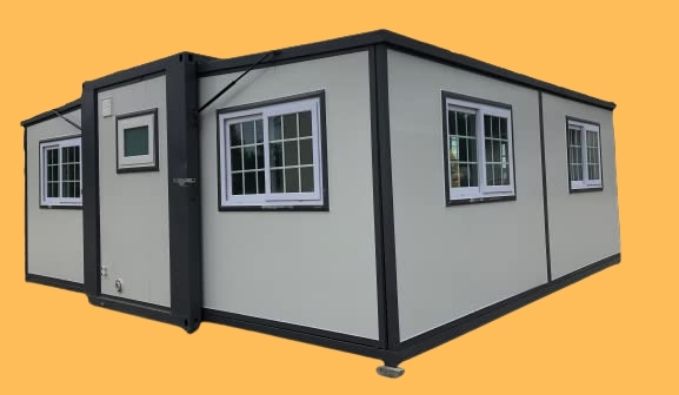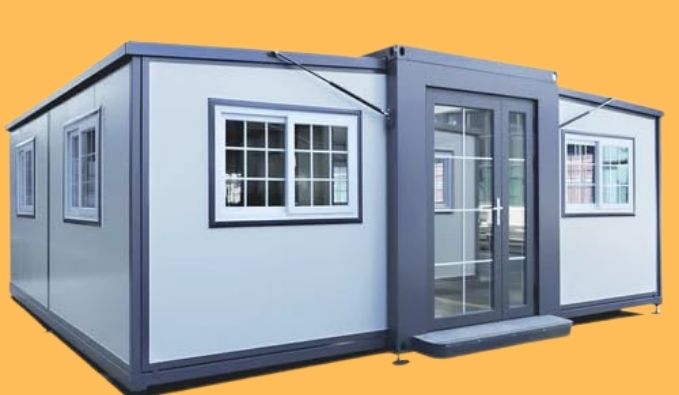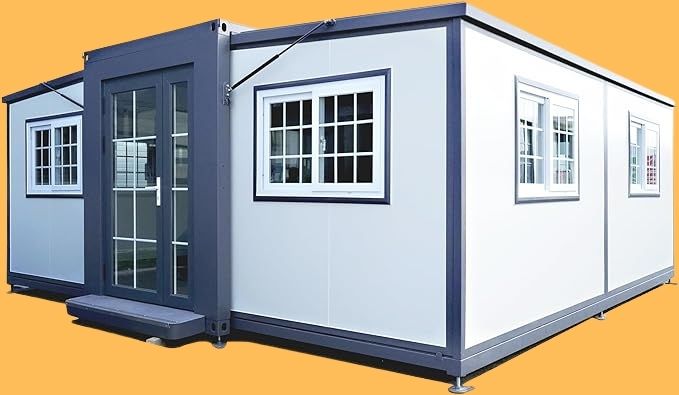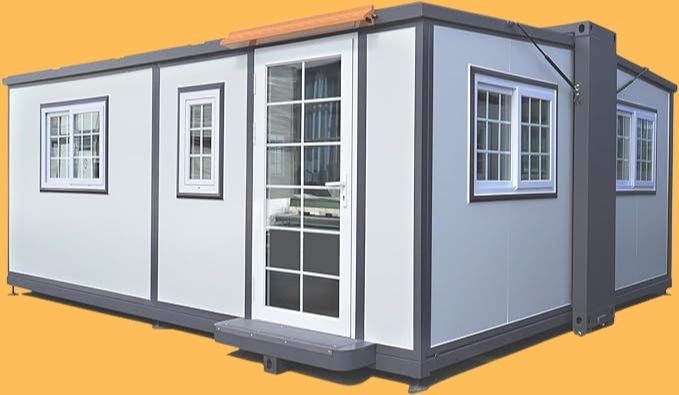Portable Prefabricated Tiny Home: Benefits and Buying Tips
The rise of minimalism and sustainable living has led to the increasing popularity of tiny homes. These compact living spaces offer a simplified lifestyle, often with a significantly reduced carbon footprint. Among the various types of tiny homes, portable prefabricated models have gained attention for their flexibility and convenience. These are factory-built homes delivered to the customer’s location, often requiring minimal additional assembly. This mobility allows homeowners to relocate easily without the hassle and expense of traditional home-moving.
Portable prefabricated tiny homes come in a range of styles, sizes, and floor plans, catering to a diversity of preferences and needs. They can serve as a primary residence, a guest house, a vacation retreat, or a mobile office. Built with efficiency in mind, these tiny homes often incorporate multifunctional furniture, storage solutions, and innovative design elements to make the most out of the available space.
When considering a purchase, potential buyers should focus on build quality, materials used, and the home’s insulation and weatherproofing capabilities. Size and layout are also crucial, as they need to match the individual’s lifestyle and the site where the home will be situated. Additionally, zoning laws and building codes vary by region, so compliance with local regulations should be verified.
Investing in a portable prefabricated tiny home can be a transformative lifestyle choice, emphasizing less consumption and more experiences. Careful consideration of the factors above ensures that this investment is sound and satisfying. Moving forward, the intricacies of the purchasing process and what to look for in a portable prefabricated tiny home will be explored further.
Top Portable Prefabricated Tiny Homes
The trend of embracing minimalism and flexibility in housing has led to a rise in the popularity of portable prefabricated tiny homes. They offer a unique combination of convenience, sustainability, and affordability, appealing to individuals seeking a simpler lifestyle or a comfortable, compact living space. The following selections are considered industry leaders for their quality, design innovation, and customer satisfaction.
Chery Expandable Prefab Home

19ft x 20ft – $38,999.90
The Chery Expandable Prefab Home is worth considering for its blend of convenience and modern design, making it suitable for various uses from a cozy abode to a mobile office.
Pros
- Spacious and well-designed interior once expanded
- Fast assembly with a finished look
- Built-in toilet enhances convenience for users
Cons
- Limited customer reviews due to a newer market presence
- Not pre-wired, requiring additional setup for electricity
- Stability may be affected by extreme weather if not properly anchored
The Chery Industrial Prefab House impressed with its quick and straightforward assembly. It unfolded into a full-size living space that felt much larger than anticipated. The built-in features, like the toilet, added a layer of convenience, particularly appreciated on days when maintaining a constant workflow was essential.
Living in the unit felt comfortable, a testament to the thoughtful interior layout and design. I found the structure solid and stable, though I took the precaution of anchoring it properly, which is especially important in areas prone to harsh weather conditions.
One issue, however, was the lack of pre-wired electrical systems. While not a deal-breaker, it meant scheduling time with an electrician, an additional step in the move-in process. But once installed, the home functioned seamlessly, providing not just shelter, but a pleasant living environment.
For those in the market for a portable, affordable, and well-designed dwelling, the Chery Expandable Prefab Home is appealing, especially for short-term stays or semi-permanent setups. It serves its purpose well, though like any home, it requires maintenance and care, particularly when dealing with utilities and weatherproofing.
DOINUO Tiny Home

19ft x 20ft – $30,000
This Expandable Prefab House by DOINUO is a versatile and space-efficient solution for those needing a compact dwelling or ancillary unit.
Pros
- Quick and easy to set up, saving time and reducing construction hassles.
- Flexible in its uses, it can serve as a home, office, or commercial space.
- Space-saving design allows for easy storage when not in use.
Cons
- May require additional insulation or temperature control depending on climate.
- Limited space compared to traditional homes, potentially restricting comfort.
- Requires a suitable foundation, possibly incurring additional costs.
DOINUO’s Mobile Expandable Prefab House presents an innovative option for individuals in need of a flexible and portable living space. Its intuitiveness in assembly is a boon, making it needless to rely on an array of tools or professional help. One could effortlessly adapt it into various functional spaces, ranging from a cozy backyard retreat to a fully operational office. It’s akin to holding a chameleon in your housing repertoire, capable of blending into a multitude of environments and purposes with ease.
Space, often a constraint for those residing in urban jungles, is well regarded in the design of this portable dwelling. The unit’s ability to collapse indicates that when you’re orchestrating a shuffle in your living or work scenarios, this tiny house can be packed away without demanding precious acreage. This feature is particularly useful for the city dweller who must pivot between expansion and conservation of space.
They really put thought into the structure’s ability to endure over time, with carefully selected materials promising fortitude against the elements. Moreover, the interior amenities equip the space comfortably, inclusive of a modest bathroom setup and options to customize. Yet, there’s acknowledgment that this isn’t a one-size-fits-all. Depending on where it stands, augmenting it for optimal temperature control might become an imperative task, and the cozy quarters might challenge the spatially inclined. To anchor your tiny house securely, prepare to invest in creating or finding a stable foundation, which could be another chess piece to consider financially.
Jaxenor Tiny Home

19x20ft – $34,899.00
The Jaxenor Tiny Home exhibits a perfect blend of practicality and comfort for those looking to downsize or need an auxiliary living space.
Pros
- Ample space with a flexible floor plan for personal customization
- Sturdy, weather-resistant build quality ensures long-term durability
- Easy to transport and set up, with potential for relocation
Cons
- Installation requires self-assembly which may be challenging
- Furniture and electrical fittings are excluded, incurring additional costs
- Special equipment needed for unloading upon delivery
The Jaxenor Tiny Home welcomes one with its surprisingly spacious interior, clearly designed for comfort and utility. Its large windows flood the rooms with natural light, creating an inviting ambiance. Moreover, its foldable nature enhances its utility as a portable dwelling.
Built to endure through various weather conditions, this tiny home stands out with its impressive earthquake and wind resistance. Such resilience is a testament to its robust, steel frame construction, reassuring residents of its safety and longevity.
While the Jaxenor Tiny Home is quite appealing for its scalability and easy setup, future homeowners should anticipate the task of assembly. It comes as a DIY project, requiring a certain level of skill and possibly assistance from professionals.
Additionally, potential buyers should budget for interior fixtures and electrical installations. These are not included, which allows for customization but also means extra out-of-pocket costs to make the space truly livable.
Lastly, the delivery process of this tiny home involves logistical considerations due to its oversized nature. Buyers must prepare for its arrival by coordinating the use of a crane to unload, a detail that adds an extra layer to the planning process.
Despite these considerations, the Jaxenor Tiny Home stands as a sound choice for those in need of a portable, resilient, and customizable living space. Whether as a full-time residence or as an extra room in the backyard, its potential applications are numerous and varied.
FAGUS H Prefab House
The FAGUS H Portable Tiny Home stands out for its ease of assembly and spacious interior, fitting for those seeking a modern, minimalist living space.
Pros
- Expandable design provides ample living space
- Quick assembly for immediate use
- Clean, modern aesthetic
Cons
- Plastic material may not suit all tastes
- Limited to a single color option
- Originating from China could raise concerns for some regarding quality and production ethics
Stepping into the FAGUS H Prefab House, you immediately appreciate the expansive feel of the white, seamless interior. The assembly process, while required, is straightforward and manageable, indicating thoughtful design considerations to accommodate those even with limited construction experience.
The house’s contemporary charm lies in its clean lines and modular design, which can be rapidly transformed to create a personal touch. The plastic materials ensure a light and airy atmosphere, albeit they might not convey the traditional warmth some homeowners seek.
Despite being spacious for a portable tiny house, the simplicity of the color palette and materials implies a crisp yet potentially sterile environment. Moreover, while the ease of setup is remarkable, consideration of the product’s origin is advisable, as manufacturing standards differ globally.
Overall, the FAGUS H Prefab House makes a compelling option for a modern and minimalist portable dwelling, balancing style with functionality. Its design innovations promise a relaxed lifestyle, albeit with some trade-offs concerning material warmth and diversity.
BOVONO Expandable Tiny Home

19 x 20FT – $34,899.00
For those seeking a versatile and durable living space, the BOVONO Expandable Tiny Home is a compelling choice due to its strong construction and adaptable design.
Pros
- Versatility in use for different purposes
- Easy to transport and assemble
- Weather-resistant and secure
Cons
- Requires a flat surface for installation
- May not suit those needing larger living spaces
- Limited customer reviews for in-depth insights
Living in the BOVONO Expandable Tiny Home feels like a clever blend of functionality and simplicity. The generous space provided is quite impressive, and the airy feel thanks to the windows is a welcome feature. The structure’s ability to withstand the elements gives a sense of security, a crucial aspect for any homeowner.
The convenience of transportation is noteworthy. Being able to pack up and relocate without significant hassle is a game-changer for those who love or need to move around. The assemble-and-go nature surely adds to the tiny home’s charm.
One must appreciate how BOVONO has managed to offer a product that feels solid once it’s put together. Despite the home’s portability, there is a reassuring sturdiness once all is said and done. The overall design gives off a modern vibe, making the tiny house a stylish addition to any plot of land.
Still, while setup is straightforward, the necessity for a flat surface can be a bit restricting. Also, while capable for a couple or small family, those with greater space requirements might find it limiting. And, the scarcity of extensive customer feedback leaves some room for uncertainty, although the high rating is promising.
Buying Guide
Budget Consideration
One should assess their financial boundaries before exploring options. A detailed budget aids in narrowing down choices and prevents overspending. Initial costs and potential ongoing expenses should be contemplated, such as maintenance, land lease, or utility connections.
Size and Layout
The unit’s dimensions are paramount—smaller spaces might be cost-effective and easier to manage but could compromise living comfort. The layout should efficiently utilize space and support the intended lifestyle, with attention to storage solutions and multi-functional areas.
Quality of Construction
Durability is vital. Seek out homes built with high-quality materials that provide thermal insulation, energy efficiency, and longevity. Structural integrity, including resistance to weather and environmental stresses, should be evaluated.
Customization Options
Flexibility in design allows for a tailoring to personal needs and tastes. Check if there are options for custom finishes and layouts within the prefabrication process.
Mobility
If relocating the home is anticipated, consider the ease of transport. Factors include the home’s weight, dimensions, and whether it’s built on a permanent foundation or designed for frequent movement.
After-Sale Service
Inquire about the manufacturer’s warranty and after-sale support. Efficient customer service can greatly enhance the ownership experience by providing assistance when needed.
| Feature | Considerations |
|---|---|
| Size | – Dimensions – Number of rooms |
| Quality | – Materials – Insulation – Durability |
| Customization | – Interior finishes – Layout changes |
| Mobility | – Weight – Transport mechanisms – Foundation requirements |
| After-Sale Service | – Length of warranty – Scope of customer support |
Careful contemplation of these aspects can lead to an informed and satisfactory tiny home purchase.
Frequently Asked Questions
This section provides concise answers to common inquiries about portable prefabricated tiny homes, guiding potential buyers through affordability, kit contents, size considerations, cost comparison, power solutions, and portability design.
How can one find affordable prefab tiny home kits?
Affordable prefab tiny home kits can be sourced through online retailers, local manufacturers, and specialized tiny house companies. Prospective buyers should compare prices, check for seasonal discounts, and look for companies that offer customizable options to stay within budget.
What are the essentials included in a typical tiny home kit purchased online?
A typical online-purchased tiny home kit includes structural components such as walls, roof, and floor panels, fasteners, windows, and doors. Some kits may also provide basic interior elements like cabinetry and a bathroom setup, but utilities and appliances are often sold separately.
What factors should be considered when selecting a 2-bedroom tiny home kit?
When selecting a 2-bedroom tiny home kit, it is important to consider the total square footage, the layout efficiency, the quality of materials, the inclusion of amenities suited to one’s lifestyle, and the compatibility with local building codes and zoning regulations.
What are the cost comparisons between building a tiny house from scratch versus buying a prefabricated kit?
Building a tiny house from scratch may offer a lower upfront cost for materials, but requires significant time and skill. Prefabricated kits tend to be more costly initially, yet they save time and can reduce potential construction errors, leading to a more predictable budget and timeline.
What are the most efficient power solutions for a tiny house living?
The most efficient power solutions for tiny house living often include solar panels, wind turbines, or a combination of both for renewable energy. Additionally, battery storage systems and energy-efficient appliances can optimize energy usage in a tiny home.
How can a tiny house be designed for easy portability?
A tiny house can be designed for easy portability by integrating lightweight and durable materials, employing a trailer with a sturdy chassis for the foundation, and ensuring the design complies with road legal size limits. Also, foldable or retractable features can aid in mobility without compromising structural integrity.

